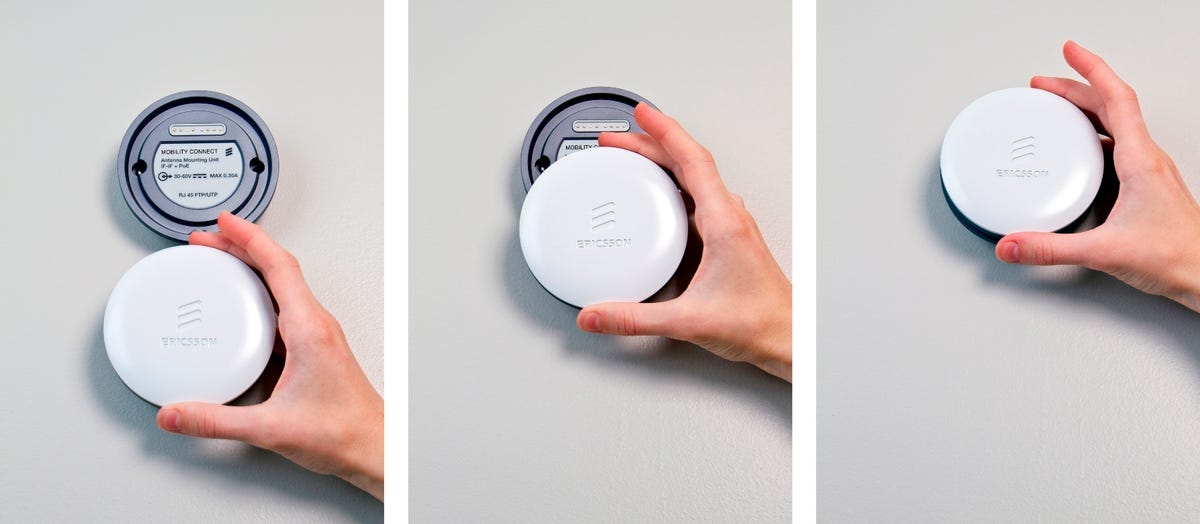
Ericsson
If you’ve been frustrated with the cell phone signal — or more precisely, the lack of one — in your office building, relief might be on the way.
Ericsson announced today a new method designed to bring cellular signal to even the most hard-to-penetrate parts of a building. Called the Radio Dot System, this system consists of multiple disc-shaped radio broadcasters called Dots. Each Dot can “provide high-quality access to mobile broadband and voice services” for the surrounding area, and multiple Dots can be used together to broaden the coverage indoors.
To be clear, this system is designed to bring real cellular signal to where it can’t reach before, not use broadband network as a substitute, like AT&T’s MicroCell femtocell.
You can’t just buy the Dots yourself and use them at home, however; this is more of an enterprise solution for big office buildings, stadiums, or college campuses. The Radio Dot System includes a base station, which works as a cellular antenna that connects to the carrier cell signal, and then distributes that to the connected Dots via network cables. The Dots themselves support the Power over Ethernet standard, meaning they don’t require a separate power source to work but instead draw power from the network cable itself. This plus the compact design — each Dot weighs just 0.7 pound — makes the Dot System very easy to implement.
According to Ericsson, the Dot System will at first offer the cellular data speed of up to 150Mbps, which is more than enough to support the current 4G LTE speed that ranges between 2Mbps and 50Mbps. It can be easily upgraded to support faster speeds. On top of that you can start with just a few Dots in a system and scale up to 96 Dots per system.
Ericsson says the Dot System works with all existing cell phone technologies and can support multiple carriers at a time. However whether or not this is the case in real life depends on the contract between the user and the carrier. This is also the case about its price, which can be just a one-time cost or a monthly subscription.
The Dot System is being introduced to US carriers, including AT&T, which considers it a “key component” in its “next-generation toolkit.” It’s expected that the Ericsson Radio Dot System will be available to customers by the second part of 2014.


Ericsson



